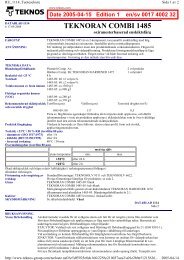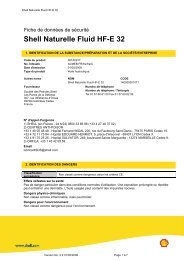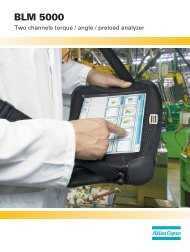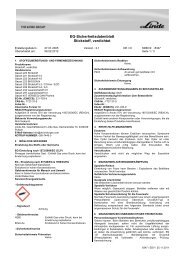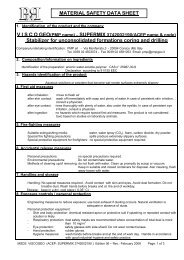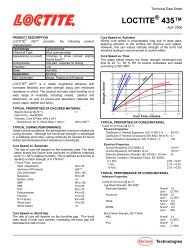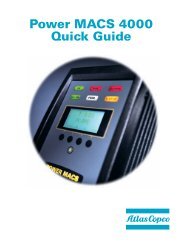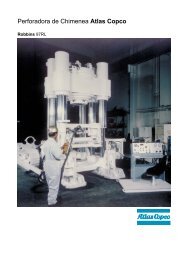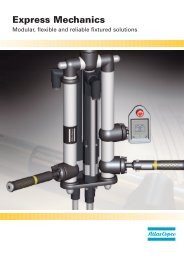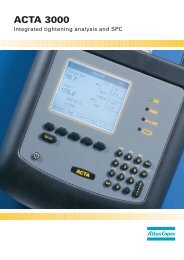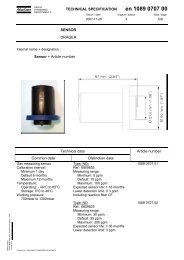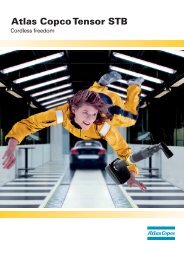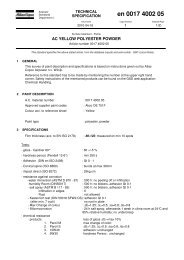Ergonomics - Atlas Copco
Ergonomics - Atlas Copco
Ergonomics - Atlas Copco
Create successful ePaper yourself
Turn your PDF publications into a flip-book with our unique Google optimized e-Paper software.
84<br />
The trigger is either operated by the<br />
thumb or by the index finger depending on<br />
the design of the tool.<br />
Straight chipping hammers normally have<br />
triggers operated by more than one finger.<br />
Normal use of chipping hammers does<br />
not involve fast movements. Frequency is less<br />
than 6 times per minute and duration more<br />
than 10 seconds per operation. Riveting ham-<br />
mers are often used with frequencies higher<br />
than 6 times per minute and the duration of<br />
the operation is less than one second.<br />
Total duration can vary a lot. Try to find<br />
the real total duration for the workplace<br />
being analysed. If that is not possible, use<br />
the values in Table 3.10.<br />
Screwdrivers<br />
The important forces are<br />
torque from the tightening, the feed<br />
force, and the trigger force.<br />
For straight tools the force from the<br />
tightening torque is experienced as a wrist<br />
dorsal-flexion torque. It is transferred to the<br />
hand as friction between the hand and the<br />
tool surface. For surfaces with low friction<br />
the grip-force can be the limiting factor. The<br />
maximal torque that a given grip-force can<br />
transfer can be calculated as the grip-force<br />
times the coefficient of friction times the<br />
diameter of the handle.<br />
Normally the wrist’s ability to handle the<br />
torque is the limiting factor.<br />
For certain types of screws, e.g., self-tap-<br />
ping screws, a considerable amount of feed<br />
force might be needed. For those cases the<br />
grip-force can be the limiting factor for the<br />
feed force. Trigger forces are normally low<br />
and distributed over several fingers.<br />
For pistol grip screwdrivers tightening<br />
torque, weight distribution, feed force and<br />
trigger forces should all be taken into ac-<br />
count. Tightening torque is experienced as a<br />
supination torque in the wrist.<br />
Bad weight distribution might give a<br />
radial-flexion torque equal to the weight of<br />
the tool times the distance from the center<br />
of gravity to the center of the handle. This<br />
torque might be a problem while the tool is<br />
moved to and from the bolt.<br />
Force and torque from the feed force is<br />
assessed as for drills.<br />
Trigger force is normally handled with<br />
the index or long finger.<br />
Normal use of screwdrivers involves<br />
fast movements. Frequency is more than 6<br />
times per minute and duration is less than<br />
3 seconds per screw.<br />
Total duration can vary considerably.<br />
Try to find the real total duration for the<br />
workplace being analysed. The number of<br />
screws multiplied by the duration, i.e., time



